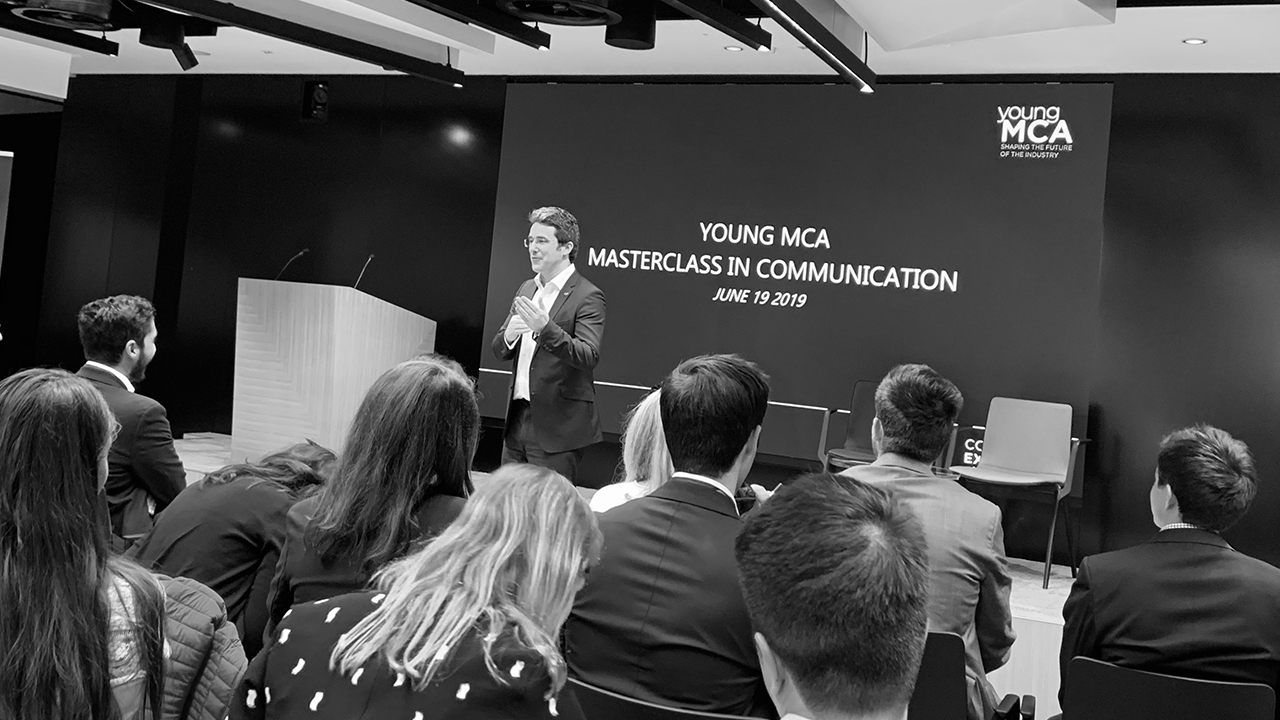Communication skills are at the heart of the management consultancy industry, as Plato is quoted to have said, ‘Wise men speak because they have something to say. Fools speak because they have to say something’. The award-winning Simon Bucknall has recently helped the Young MCA to develop their inner wise men.
Change.
This single word was, for us, the main takeaway from the evening. Not only will we endeavour to change the way that we present using the following 4 rules that were discussed in the masterclass, but we will also strive to identify the change that our presentations will make to the audience.
To that end, the audience, you, want to know what they must do after listening to you, the better you communicate the more likely you are to get them to adopt the intended change you require of them. For example, the intended outcome of you reading this, is that you take something useful from it, be that a theoretical understanding of communication or the intention of implementing one of the following tips – we shall see.
- Simplicity. The identification that the written word and the spoken word are separate entities and require differing treatments if they are to be used effectively and impactfully. The spoken word needs to be simple and, in certain circumstances, should be used to create a flow of conversation. To replicate the power of simplicity and flow we partook in an exercise of counting to three in pairs taking it in turn to speak, with rules added to make it increasingly difficult.
- Focus. Effective speaking is more about the listener than the speaker. It is about accessing the relevant information that will lead to change for the listener, not necessarily a transfer of knowledge. Simon expressed that switching the focus from the speaker to the listener also encourages the use of the word, ‘you’, this increases engagement and relatability.
- Silence. The power of silence when giving a presentation. Simon instructed us to complete an exercise where filler words were removed from our conversations and punctuation was initially verbally expressed and then silently spoken in our heads. This brought awareness not only to the silence that the punctuation created but also the power of short sentence structure. It creates suspense and makes the audience endeavour to tune in to the coming point.
- Structure. Both physical structure and verbal structure. Posture can influence both how the speaker feels when communicating and how the audience reacts to the presentation, a neutral stance of both feet grounded (one slightly in-front of the other) and hands above hip height was advised as the best portrayal of an impactful speaker. Point, Evidence, Point. This if referring to verbal structure. Applying PEP reduces the likelihood of rambling and pulls the story together. If you ever feel like you are rambling, always remember that there is an ‘eject button’, said button is the phrase ‘and so…’. Use ‘and so…’ to relate your evidence back to your initial point, this way the (hopefully) compelling story that you are telling has a clear start and finish.
Thank you, Simon, EY and Young MCA, for not only providing us with advice on how to maximise the impact of, and engagement in, presentations but also for a thoroughly enjoyable evening and opportunity to meet other young consultants.
Written by Katie Butcher (Vendigital) & Matt Prifti (Arcadis)

